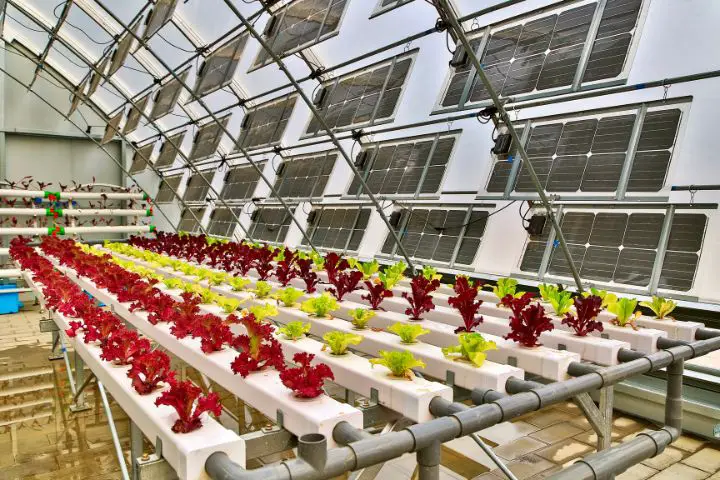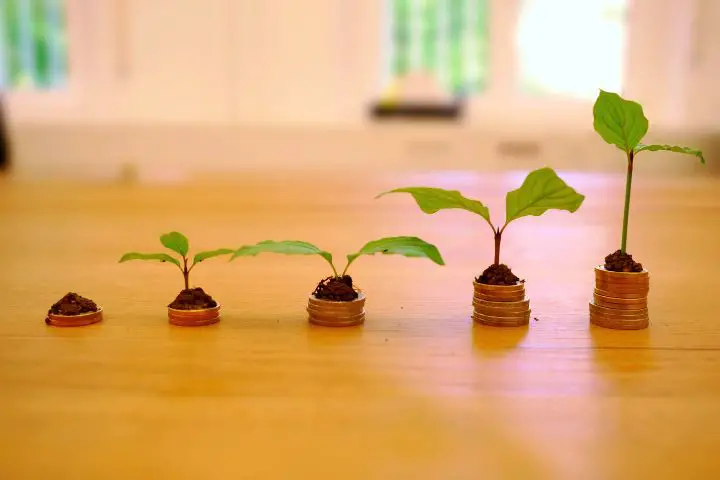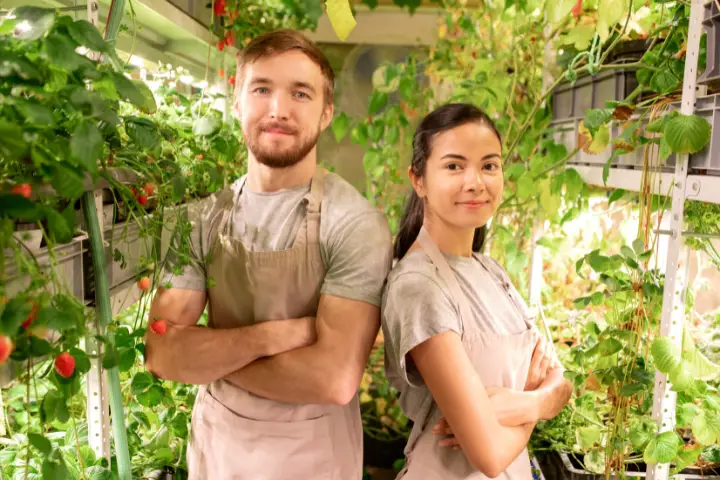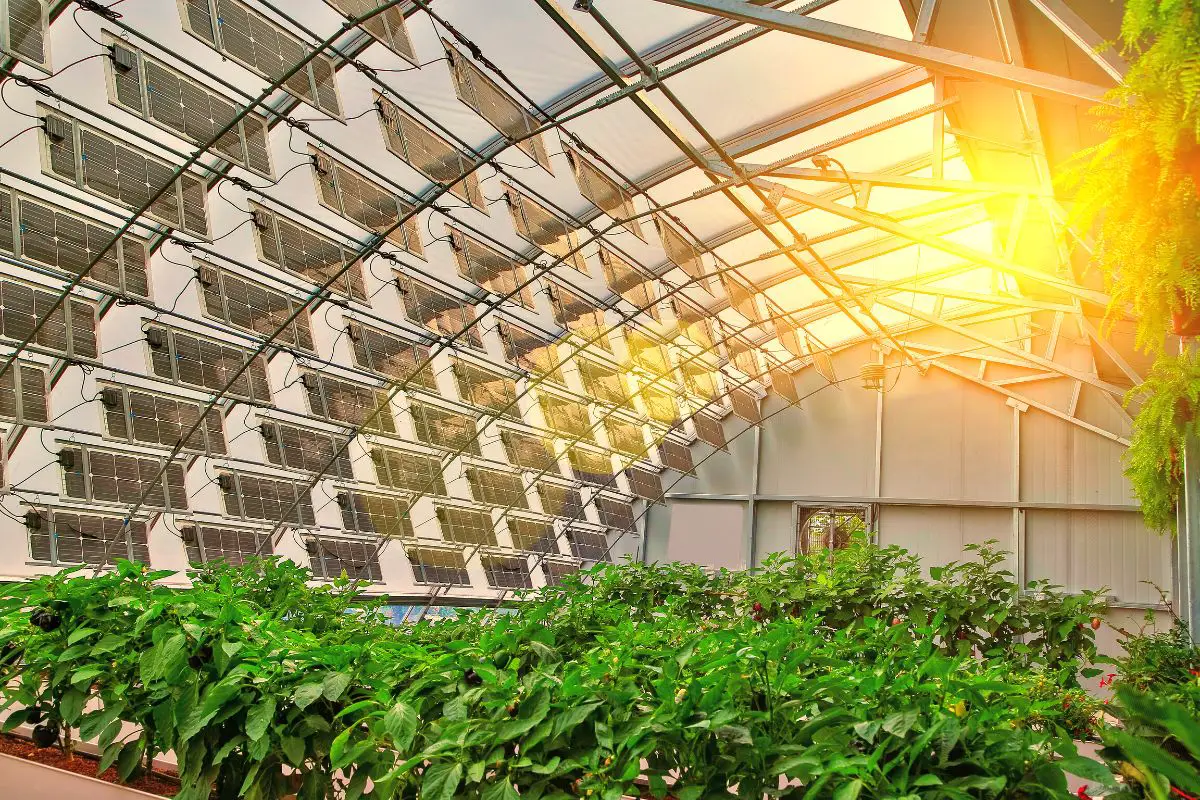The Farmer’s Guide to Solar Greenhouses (+ DIY Tips)
Picture this. You walk into a beautiful, colorful jungle in the heart of winter, and there are plants growing all around you while snow covers everything else outside.
No need to use your imagination – solar greenhouses have made it possible! Farming on this scale, supported by natural sunshine, is now here, and sustainable agriculture has taken another step forward.
So let’s look into why and how you should give solar a try for your small- or big-scale farming or gardening.
What Solar Does for Greenhouses
Alright, here’s the scoop. Greenhouses have always been about holding on to heat so plants can thrive. Now, with solar power, we are really taking things up a level. Think of the sun like this huge battery floating above us. Solar panels mounted on greenhouses catch its energy and turn it into an incredible source powering their many activities.
To begin with, heating is one important use. When temperatures drop outside and we need jackets to stay warm, inside these sunny-style greenhouses it feels more tropical than on the Caribbean beach.
The solar panels soak up the sun’s rays and turn them into heat, making sure all plants are warm and comfy. But that isn’t even the best part!
These days, summers can get pretty darn hot. And there is such a thing as too much heat! To help combat this, these greenhouses have fans powered by solar power alone to keep things nice and cool – no sauna vibes here.
And of course, don’t forget about outdoor lighting too! Solar garden lights aren’t just a decorative addition but also provide plenty of light when night time rolls around.
While it’s not a necessity, solar-powered greenhouses have another awesome feature. They come with upgradable automated watering systems that take care of your plants without sucking up too much energy.
What Are Passive Solar Greenhouses?

A passive greenhouse works as an absorber of sunlight. Instead of using active tech or devices, these passive solar gems are designed naturally to absorb and store warmth during daylight hours. It’s sorta similar when we wear black on those sunny days if you want more heat. It sponges in extra rays throughout daytime.
These greenhouses use materials that capture sunlight and turn it into heat, keeping plants warm even when temperatures outside drop to a freezing level.
To top that off, during nighttime, the stored-up warmth is released in an effort to promote plant growth under ideal conditions.
It’s like having a thermos flask for your garden!
The design of these structures plays its own part here too. They’re optimized for maximum sun exposure with walls equipped to preserve as much heat as possible and vents which maintain suitable temperature levels.
It’s all about going along with nature instead of battling against it. Much like how solar agricultural systems on regular farms do!
Solar Power and Hydroponic Greenhouses: A Match Made in Heaven?
Have you ever thought what it would be like to combine two of the most groundbreaking farming technologies – solar power, a symbol of renewable energy, and hydroponics, the art of growing plants without soil?
It’s kinda like creating a fine wine and cheese combo. Both complement each other beautifully, making the experience truly remarkable!
Solar power is known as a clean infinite source of energy, which makes it a perfect companion for hydroponic greenhouses. Just think about how much more sustainable agricultural systems on farms could become with such a combination!

The reliability of the sun is definitely attractive when it comes to powering hydroponic systems. All the water pumps and LED lights need a reliable source, right? But don’t get ahead of yourself. Setting up solar panels can be a brain-scratcher. Space may be an issue, and they’re not exactly cheap either!
And that’s without mentioning how hard it actually is just to set up hydroponics in general. If you decide to take on this combination, then buckle up for one wild ride.
It’ll certainly be challenging but no doubt very exciting too!
The Impact of Solar Power on Greenhouse Crops
Solar-powered greenhouses present a unique benefit that you won’t find in any regular garden. Consistency when it comes to temperature control is one of the main perks you’ll get to experience. Having consistent temperatures means you can grow crops such as tomatoes, cucumbers, and peppers all year round!
In addition to this great advantage, the ventilation systems powered by solar energy provide an uninterrupted flow of fresh air, which decreases the likelihood of plants being exposed to diseases which tend to thrive in humid conditions. No more worries about powdery mildew or bacterial leaf spots!
Yet there is one potential danger with using these kinds of greenhouses: leaf burn. Just like our skin is damaged from too much sun exposure, plant leaves suffer in a similar way.
What’s also important not to overlook are maintenance requirements for your solar panels. Cleaning them regularly and keeping them working at peak capacity will ensure maximum efficiency levels down the line.
How Cost-Effective Are Solar Greenhouses?

Setting up a solar greenhouse requires a significant initial investment. From constructing the greenhouse structure to integrating solar panels, equipment, and automation technology, the costs add up.
But is the investment truly worth it?
Let’s break it down with these things to consider:
- Optimized energy use: Solar greenhouses efficiently harness the sun’s power, not only warming the interior but also powering any electrical devices. The design, much like certain Chinese greenhouses, allows for heat retention during the day and its release at night, minimizing the need for additional heating.
- Boosted plant growth: Solar greenhouses promote plant growth by providing consistent light, resulting in healthier crops for sale or personal use.
- Year-round cultivation: The beauty of a solar greenhouse is its defiance of seasonal constraints. It offers the luxury of starting plant growth early in spring and continuing harvests into fall or even winter, creating a steady supply of fresh produce.
- Efficient water management: Another great feature of solar greenhouses is their use of water as a thermal reservoir. Stored heat from the day is released during cooler nights, and the same water is repurposed for irrigation (once cooled to optimal levels), leading to significant water conservation.
DIY Solar Greenhouses: A Feasible Project?
Now, let’s dive into the nitty-gritty. A DIY solar greenhouse project requires meticulous planning. It’s a harsh reality if you want to have your backyard sanctuary, a haven where plants flourish year-round.
It’s not just about putting up a structure. It’s about optimizing sunlight absorption, ensuring proper ventilation, and perhaps even integrating advanced automation systems.
Here are some key things to put your thinking into the fifth gear:
- Blueprints and plans: Start with a solid plan. Whether you opt for free online resources or invest in detailed guides, ensure your blueprint is tailored to your region’s climate and your specific needs.
- Materials: From lumber and polycarbonate panels to insulation and, of course, solar panels, sourcing high-quality materials is crucial. Remember, this is a long-term investment!
- Tools and skills: Basic carpentry skills can go a long way. Equip yourself with essential tools like drills, saws, and measuring tapes. If you’re not confident, consider a DIY-savvy friend or attending local workshops to build up the skill.
- Budget: I’m not gonna lie. While building your solar greenhouse can be cost-effective in the long run, the initial outlay is such that your wallet may frown. Budget wisely, keeping in mind potential long-term savings.

Handy Solar Greenhouse Building Tips
Here are some golden nuggets I picked up along the way when I was knee-deep in that DIY solar greenhouse project:
- Map it out: Before diving in, I took a step back to plan things out. Jotted down everything I’d need, estimated the costs, and visualized the end goal. Trust me, having a clear roadmap made everything smoother.
- Don’t skimp on quality: Let’s be honest. You’ll be tempted to save a few bucks here and there, but you’ll quickly realize that quality matters. Going for the high-quality stuff upfront will save you a ton of headaches (and potential repairs) later on.
- Lean on your tribe: Don’t be too proud to ask for help. A buddy who’s handy with tools or even a local construction group may be invaluable for tips and support.
- It’s a journey, not a race: Building this thing felt like running a marathon, not a 100-meter dash. Feel free to take your time, savor the process. With each brick and panel, you’ll feel closer to that dream of a sustainable, green future.
Solar Greenhouses: A Leap Into a More Sustainable Future?
Solar greenhouses are the future of sustainable farming, blending the power of the sun with innovative agricultural techniques.
From the natural warmth of passive solar greenhouses to the synergy of solar power and hydroponics, the benefits are clear: energy savings, increased productivity, and year-round growth. While there are challenges, like maintenance and initial costs, the long-term gains are undeniable. With real-world success stories like Sundrop Farms and research backing from institutions like NREL, it’s evident that this isn’t just a fleeting trend.
Take it from Dr. Michael Loik, a scholar who’s pretty enthusiastic about solar-grown plants in glasshouses. “If greenhouses generate electricity on site, that reduces the need for an outside source, which helps lower greenhouse gas emissions even more. We’re moving toward self-sustaining greenhouses,” he told the UC Santa Cruz Magazine.
And that was back in 2017! Exact data is lacking, but we can safely assume that the global use of solar greenhouses, both big- and small-scale, has gone far beyond Loik’s estimated 9 million acres.
Whether you’re considering a DIY project or just curious about the tech, solar greenhouses are a game-changer, paving the way for a greener, more sustainable future in agriculture.






